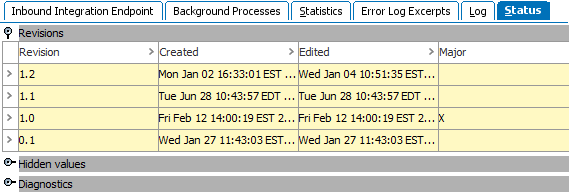Inbound integration endpoint settings can be viewed in the Inbound Integration Endpoint editor. To edit the settings, reopen the wizard using the hyperlinks defined below, or with the Edit Inbound Integration Endpoint option on the IIEP right-click menu.
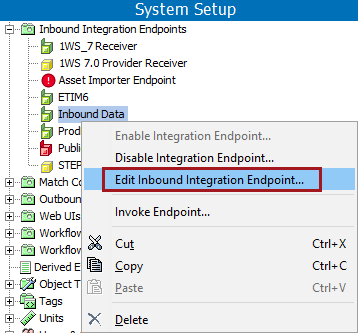
Each tab on the editor is defined below and includes parameters to maintain the IIEP.

Inbound Integration Endpoint Tab
This tab holds basic information within the sections defined below.
Description Section
The Description section includes basic information to identify the IIEP. Only the name, description, and enabled parameters can be edited. This data is originally set up in the IIEP wizard, refer to the IIEP - Identify Endpoint topic.
For information on the Endpoint Status, refer to the Running an Inbound Integration Endpoint topic.
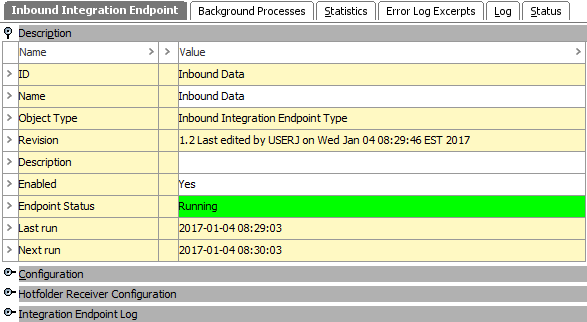
Configuration Section
The Configuration section displays many of the settings determined through the wizard.
- The Edit Configuration link opens the wizard and allows you to modify the following parameters:
- For information on the Pre-processor, refer to IIEP - Configure Pre-processor.
- For information on the Process Engine, refer to IIEP - Configure Processing Engine.
- For information on the Post-processor, refer to IIEP - Configure Post-processor.
- For information on the Error reporter, refer to IIEP - Error Handling & Reporting.
- Changes to the schedule can be made easily using the Schedule parameter ellipsis button (
 ). This opens the wizard on the Schedule Endpoint step, refer to IIEP - Schedule Endpoint.
). This opens the wizard on the Schedule Endpoint step, refer to IIEP - Schedule Endpoint. - For information on the Queue for endpoint (legacy), Queue for endpoint process (legacy), Transactional settings, Maximum number of waiting processes, Maximum number of old processes, Maximum age of old processes, Number of messages per background processes, Contexts, and Workspace parameters, refer to IIEP - Configure Endpoint.
- For information on the Priority parameter, refer to the BGP One Queue topic in the System Setup documentation.
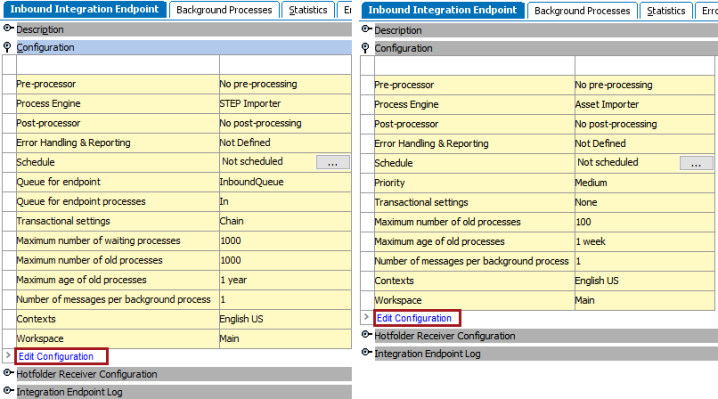
Receiver Configuration Section
The Receiver Configuration section displays details about the receiver method selected for the IIEP. For more information about receiver methods, refer to the Receiver Methods section of the IIEP - Choose Receiver topic.
- The Edit Receiver Plugin link opens the wizard on the Choose Receiver step and allows you to modify the settings. For more information, refer to the Receiver Methods section of the IIEP - Choose Receiver topic.
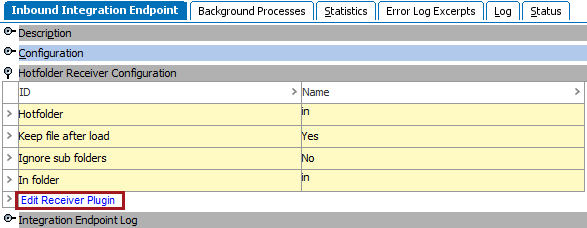
Integration Endpoint Log Section
The Integration Endpoint Log section contains information about the endpoint background process. An entry is generated each time the endpoint is invoked, when background processes generated by the endpoint are started, and when processing errors occur.
- The background process (BGP) link opens the individual Importer Background Processes.
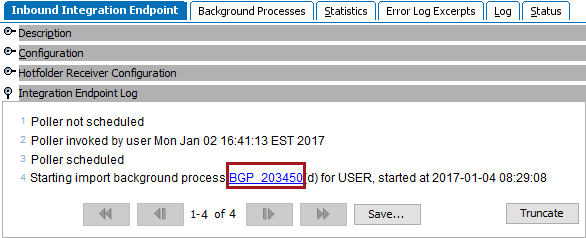
Background Processes Tab
This tab holds information about any related processes. Hover over an ID to display the background process (BGP) link, click it to open the individual inbound background processes.

For details on the states of a background process, refer to the BGP States and Quarantine Status topic in the System Setup documentation.
For more information, refer to the Monitoring an IIEP via Background Process topic.
Statistics Tab
This tab provides statistics about the number of requests handled, run times, and wait times. Key measures are Endpoint up-time, Waiting in data source, Number of failed requests (Background Processes with errors), and Mean run time (average processing time per import). This data cannot be exported.
Note: Receivers can poll the data source to check for waiting files or messages more frequently than the IIEPs are invoked.
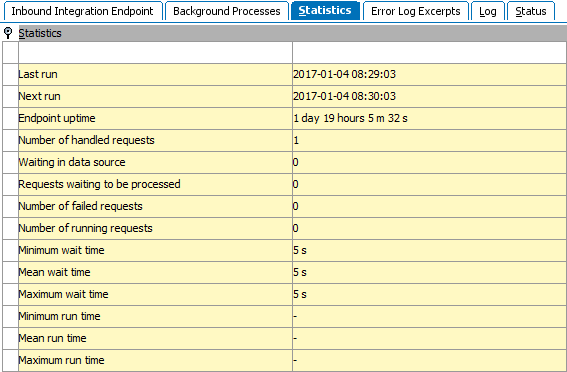
Error Log Excerpts Tab
This tab shows data from the main Java log file related to failed background processes with Log Level > 'Info.' Click a hyperlink to a failed background process and correct the cause of the failed background process. For more information, refer to the Handling Failed IIEP Background Processes topic.

The number of errors that display on the 'Error Log Excerpts' tab per background process is, by default, 10. This maximum can be adjusted adding the IntegrationEndpoint.ErrorLogExcerptsLimit property to the sharedconfig.properties file, and setting it to the desired maximum. It should be noted that configuring a high maximum number of displayed errors for this tab could result in performance issues.
Log Tab
This tab provides information about changes to the IIEP configuration.
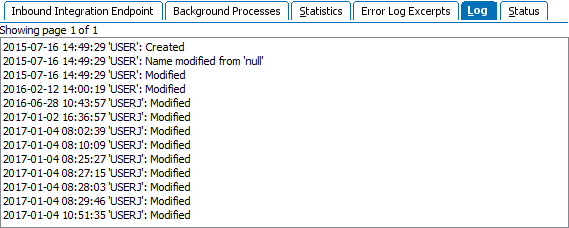
Status Tab
This tab provides information about revisions, hidden values and diagnostics.
